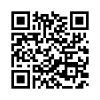The ideational meaning of Covid-19 health promotion posters: Multimodal discourse
Downloads
Downloads
Attar, M. M. (2014). Inter-semiotic cohesion analysis of multimodal elements in Iranian English Textbooks. University of Malaya.
Bedi, N. K. (2019). Analysing the poster of the reader: A multimodal perspective. Language in India, 19(1), 159–167. www.languageinindia.com.
Cresswell, W. J. (2009). Research Design. Sage Publications, Inc.
Dallyono, R., & Sukyadi, D. (2019). An analysis of multimodal resources in environmental protection posters. Indonesian Journal of Applied Linguistics, 9(2), 472–479. https://doi.org/10.17509/ijal.v9i2.20245.
Eggins, S. (2006). An introduction to systemic functional linguistics. In Journal of Sociolinguistics (Vol. 10, Issue 2). https://doi.org/10.1111/j.1360-6441.2006.0327j.x.
Halliday, M. A. ., & Matthiessen. (2014). Introduction to systemic functional linguistics. Routledge.
Hasannudin. (2019). Analisis poter kampanye kesehatan pencegahan hiv/aids di indonesia: sebuah kajian multimodal. Universitas Pendidikan Indonesia.
Hasyim, M. (2015). Konotasi green business dan green technology sebagai simbol ramah lingkungan. International Conference on Language,Society and Culture (ICLCS), 724–731.
Hermawan, B. (2013). Multimodality: Menafsir Verbal. Bahasa & Sastra, 13 No. 1 A.
Hermawan, B., & Rahyono, F. X. (2019). Ideational meanings of science and interpersonal position of readers in science textbooks for basic level in Indonesia. Indonesian Journal of Applied Linguistics, 9(1), 38–47. https://doi.org/10.17509/ijal.v9i1.15932.
Hermawan, B., & Sukyadi, D. (2017). Ideational and interpersonal meanings of children narratives in Indonesian picturebooks. Indonesian Journal of Applied Linguistics, 7(2), 404–412. https://doi.org/10.17509/ijal.v7i2.8139.
Hidayatullah, M. J. (2018). Efektivitas media permainan simulasi dan media gambar. Diksi, 26(1), 29–39. https://doi.org/10.21831/diksi.v26i1.
Kress, G., & van Leeuwen, T. (2020). Reading images. In Reading images. Routledge. https://doi.org/10.4324/9781003099857.
Kurnianta, P., & Maharani, S. D. (2020). Refleksi aksiologis atas teori bahasa Noam Chomsky dan M.a.K Halliday. Diksi, 28(2), 190–198. https://doi.org/10.21831/diksi.v28i2.33080.
Mahmudah, H. (2021). Multimodalitas dalam komik strip liburan tetap di rumah pda instagram @Kemenkes_RI. Ranah: Jurnal Kajian Bahasa, 10(2), 424. https://doi.org/10.26499/rnh.v10i2.4179.
Muhammad. (2011). Paradigma kualitatif penelitian bahasa. Liebe Book Press.
Nugraha, I. S., & Haq, A. . (2021). Social stigma of Covid-19: A semiotic analysis of WHO campaign posters. SOSHUM : Jurnal Sosial Dan Humaniora, 11(2), 155–168. https://doi.org/10.31940/soshum.v11i2.2489.
Torr, J. (2004). Talking about picture books: the influence of maternal education on four-year-old children's talk with mothers and pre-school teachers. Journal of Early Childhood Literacy, 4(2), 181–210. https://doi.org/10.1177/1468798404044515.
Wu, Y.-C., Chen, C.-S., & Chan, Y.-J. (2020). The outbreak of COVID-19: An overview. Journal of the Chinese Medical Association, 83(3), 217–220. https://doi.org/10.1097/JCMA.0000000000000270.
Zhang, Y. (2017). Transitivity analysis of Hillary Clinton's and Donald Trump's first television debate. International Journal of Applied Linguistics and English Literature, 6(7), 65. https://doi.org/10.7575/aiac.ijalel.v.6n.7p.65.
Zuhriah. (2018). Makna warna dalam tradisi budaya; studi kontrastif antara budaya Indonesia dan budaya asing. https://www.researchgate.net/publication/325391876.
The authors who publish this journal agree to the following requirements. The author retains the copyright regarding the work being simultaneously licensed below Creative Commons Attribution ShareAlike License.

Jurnal Diksi by Faculty of Languages, Arts, and Culture, Universitas Negeri Yogyakarta is licensed under a Creative Commons Attribution-ShareAlike 4.0 International License.
Based on a work at http://journal.uny.ac.id/index.php/diksi




















